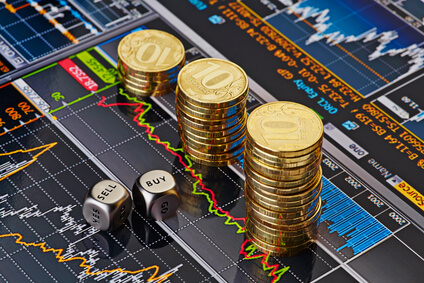
The forex market is the highest in terms of traded volume. It’s a supply-and-demand-driven market like every other stock market. The Forex market is a valuable place to catch fun, but only if you know what you are doing.
There is now a lot of material to take and consume before you can start trading. It may be prudent to read and think from various places and revise certain aspects of currency trading theory. A lot of useful information can be found on Robomarkets
How forex markets work
- The forex markets are open 24 hours a day, and traders usually position their orders directly in the markets via MT4 trader, or other derivatives, with the broker managing their transaction. However, understanding your Forex market hourswill position you at an advantage.
- Forex and other derivatives have in common that traders will use large quantities of leverage to maximize the size of their stake and profit from smaller marginal price changes.
- However, the leverage offered by forex is also several times larger than that offered by other markets, up to a 500:1 leverage ratio, making forex both possibly more lucrative and potentially even more volatile.
How demand and supply affect Forex
Demand and Supply In economics is a framework that illustrates how prices are formed in a free market.
The price of products is set when the quantity demanded by a buyer and the quantity produced by a manufacturer are equal. This indicates that there is a greater abundance of apples than demand.
The orange market scenario applied to the forex market any time a specific currency is purchased, excess demand is generated on the market, the prices are shut off, and the price is pushed up. Forex maps are focused on the constantly shifting market economics of currencies.
Since all economic activities in the globe are only important to the economy regarding how much they affect the demand and supply of a commodity. Understanding the theory of price equilibrium is critical in determining how Forex trading operates.
It’s also worth noting how much they affect an asset’s expected supply and demand. Taking an ‘orange market’ as an illustration, if one of the orange vendors goes out of business this season, you might expect orange prices to increase before you arrive at the market.
How are Forex markets traded?
- The only difference between the forex markets and the capital markets and all other kinds of financial markets is the uncertainty of the trading currencies.
- Currencies fluctuate in value due to two main factors: global indices and global events.
- This suggests that, while currency market values can swing dramatically in any direction, they are generally less volatile than stock markets. Your stock profit calculator is more likely to register a loss in this context.
- This is one of the main reasons why leverage is so critical in forex markets. By inflating trading sizes, leverage essentially simulates the impact of fluctuations by making even smaller up-and-down moves more extreme.
- In a related way, since money is the most volatile commodity, forex markets are far more liquid than other forms of capital markets.
- Rather than purchasing shares that would either be kept for dividends or exchanged for cash, money is now cash, so positions are traded much faster, and orders are filled much faster than in most capital markets.
- Foreign exchange investing, also known as forex, can be a great way to make money by trading in a potentially smaller analysis area than many other stock markets.
- For those that wish to be competitive, the key is to consider how markets function, how they can respond to various stimuli, and how you can handle the potentially catastrophic risks of market exposure.
The Concept of Currency Pairs
When you first begin trading forex, you will find that you are transacting on currency pairs such as EUR/USD or GBP/USD.
Euros/US dollars or pounds/US dollars are the most common pairings used in MetaTrader 4.
The first and – most important thing to consider about forex markets is that currencies are quoted and exchanged in pairs. For example, instead of buying dollars or selling sterling, you buy dollars in sterling or Euros in dollars.
It would be not easy to breed any uniformity for traders without currency pairs. The transaction’s versatility would be limited – those who live in London would have to exchange currencies in pounds. In contrast, those who lived in Spain should have to always exchange in Euros.
The forex markets have effectively leveled the playing field by developing currency pairs that can or may not include the trader’s local base currency. This has made for a simpler transaction process to leverage.
Currency pairings, therefore, imply that more uncertainties and external parameters must be taken into account during the analysis process.
Rather than looking into how the FX markets will react to global events, the question becomes how a single currency will change compared to the next, which makes the equation a bit more complex.
Leveraging Forex market hours
Excluding the stock market holidays, certain busy trading hours are closely associated with the most interesting operation on your MetaTrader 4. As you go through the day, those currency pairs show various patterns and behavior.
To reduce risk, you should study the Forex market hour chart and the most prevalent volatility trends and, as a result, select the time that best suits your trading needs.
For example, if a Forex trader does not know what to expect from a session, they could lose out on a lucrative opportunity. Alternatively, the trader might not be at their machine at the time of a surge in volatility.
The bottom line
By now, you should have a good understanding of the fundamentals of Forex trading, including the market’s major guiding forces, the underlying dynamics in terms of key actors, the key market forces, and how online Forex trading functions in practice.
